Well planned houses require careful consideration of their surroundings and their various entry sequences. We like to say that none of our homes have a back because we carefully design every façade—but we do like to make it clear where the front door is, and this is often the most formal entrance to a home. But equally important, and more frequently used in most cases, is the Family Entrance. This less formal space should be dignified yet understated and carefully organized to serve many different functions.

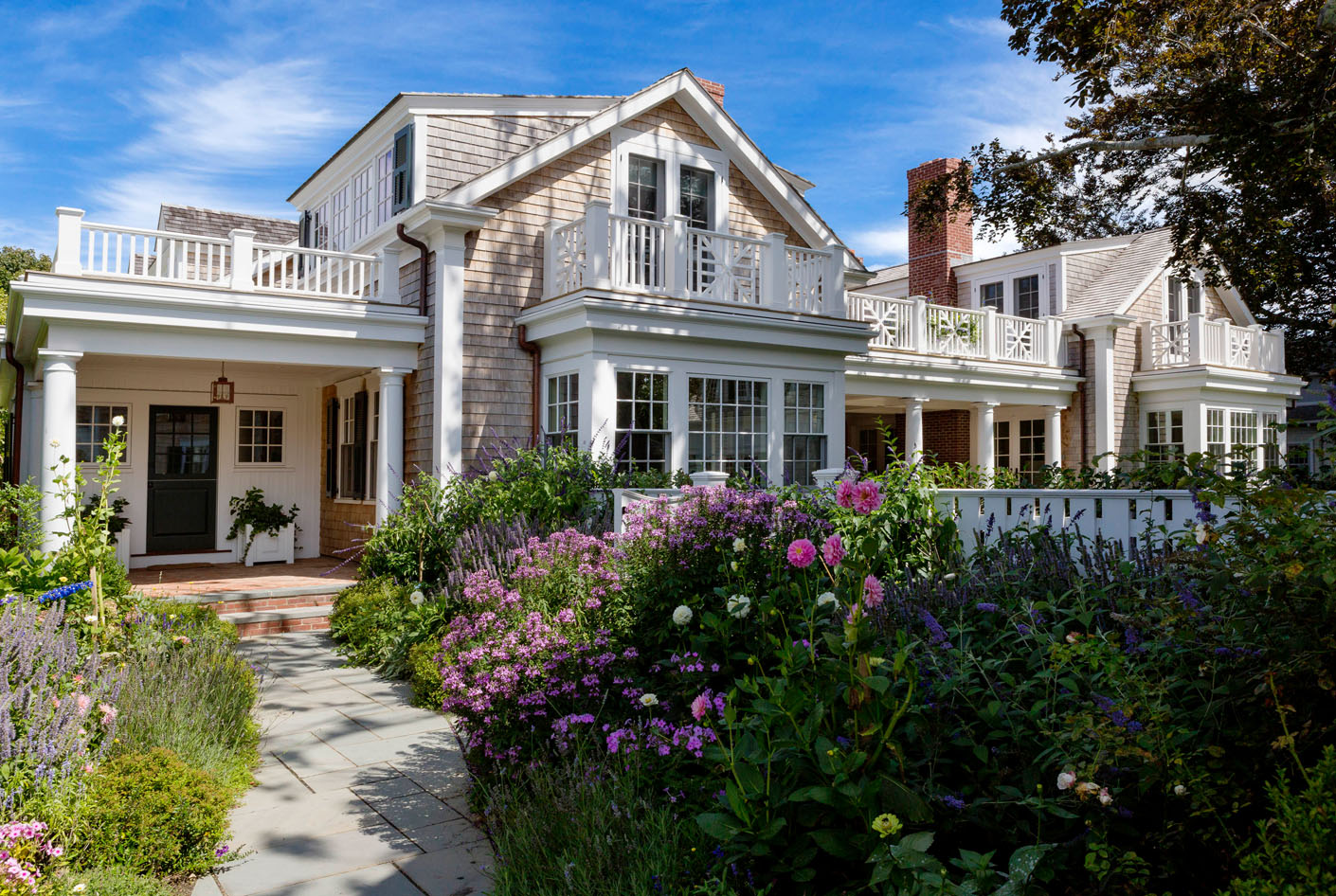
Increasingly, Americans have adopted the rituals of Scandinavian and Asian cultures of removing our shoes before walking through our homes. Perhaps there is also the influence of Mister Rogers in our modern psyche, which tells us that arriving home deserves a ritual. Some of us have an overwhelming need to change into a cozy sweater and slip on our house shoes to feel truly at home.
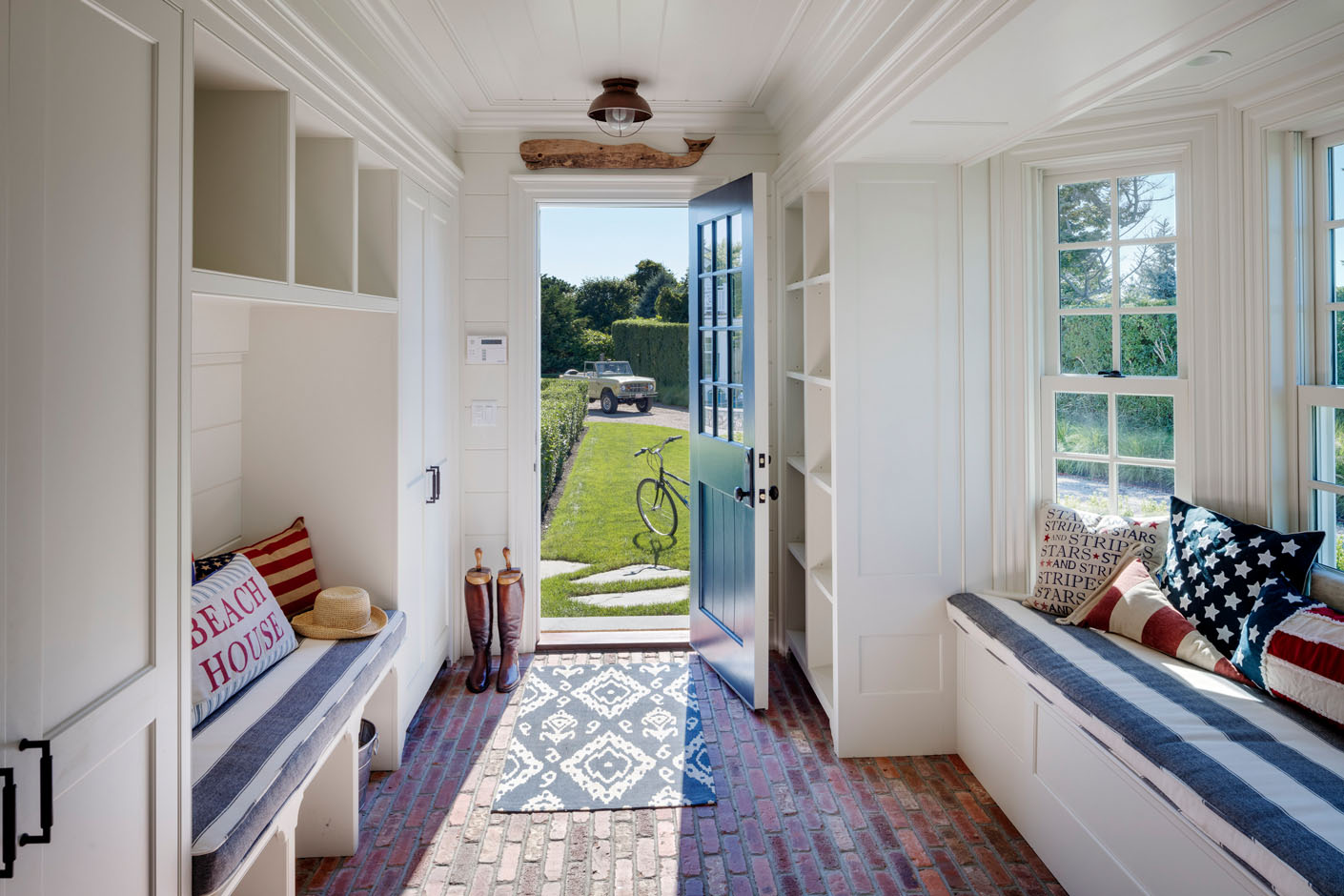
The family entrances we design generally open directly onto a mudroom, which we fit out with storage that suits the needs of the family and the house. For younger families, we often design individual cubbies so that each family member can easily store and locate their coats, boots, scarves, gloves, masks, and some sports gear. For smaller families or empty-nesters, we often provide one or two large closets that offer greater flexibility. Cubbies can either be open or closed depending on the owner’s preference, but we tend to prefer them with doors as it looks tidier. When enclosing the cubbies, we always make sure to provide adequate ventilation to keep things inside nice and dry. Sometimes we even install boot dryers that can be placed in each cubby or provided as a communal rack elsewhere in the mudroom.
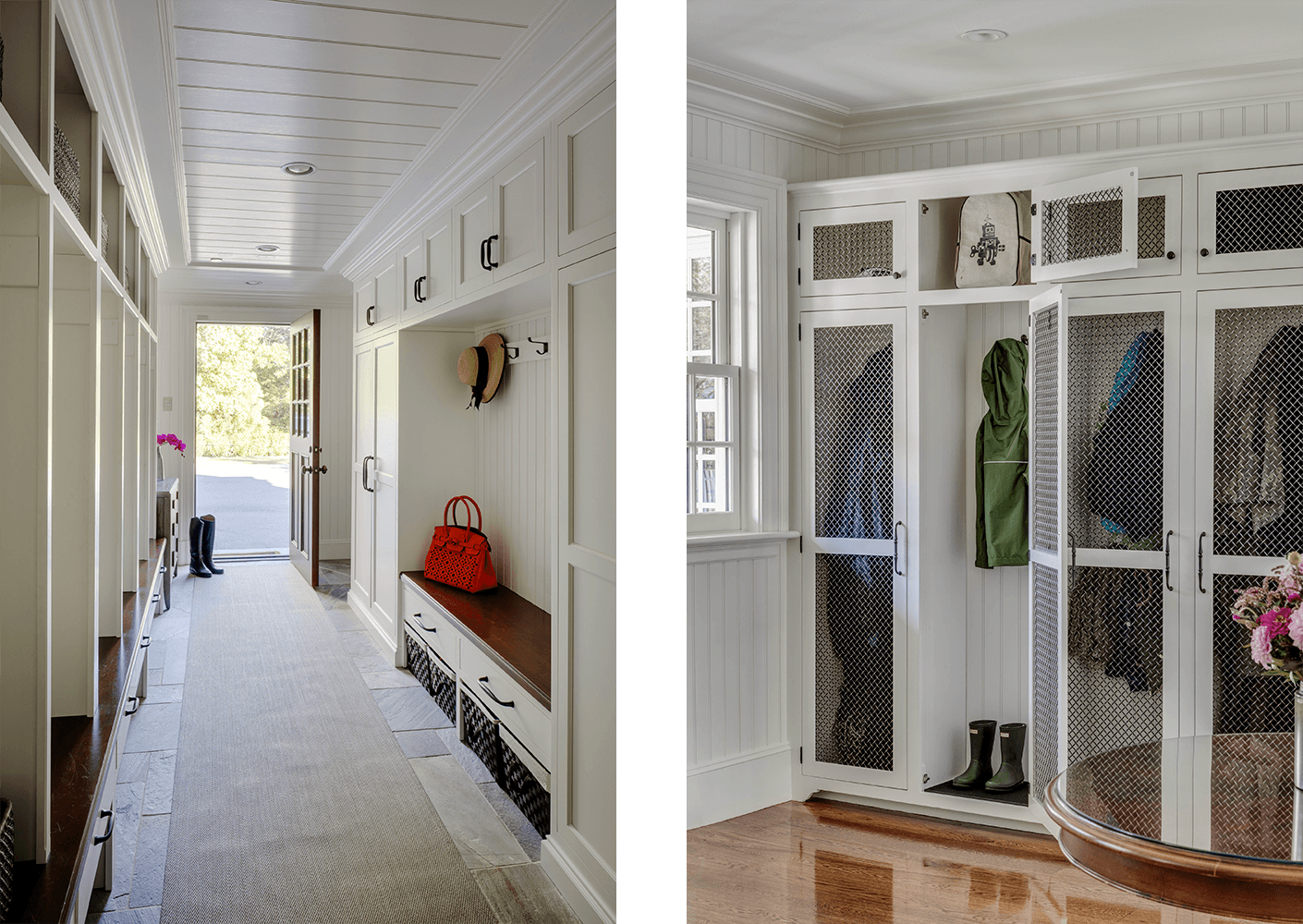
The family entrance is also an ideal place to leave keys, and mail, and to open packages – and re-pack them when returning a product from an online retailer. We also like to provide large sinks, as it might be where we wash our smaller pets after they have been outside – or rinse off some muddy boots. To accommodate all this, we often provide some counter area with storage above and below. This becomes a favorite spot to store household needs like batteries, spare light bulbs, tools for tending house plants, and so on.
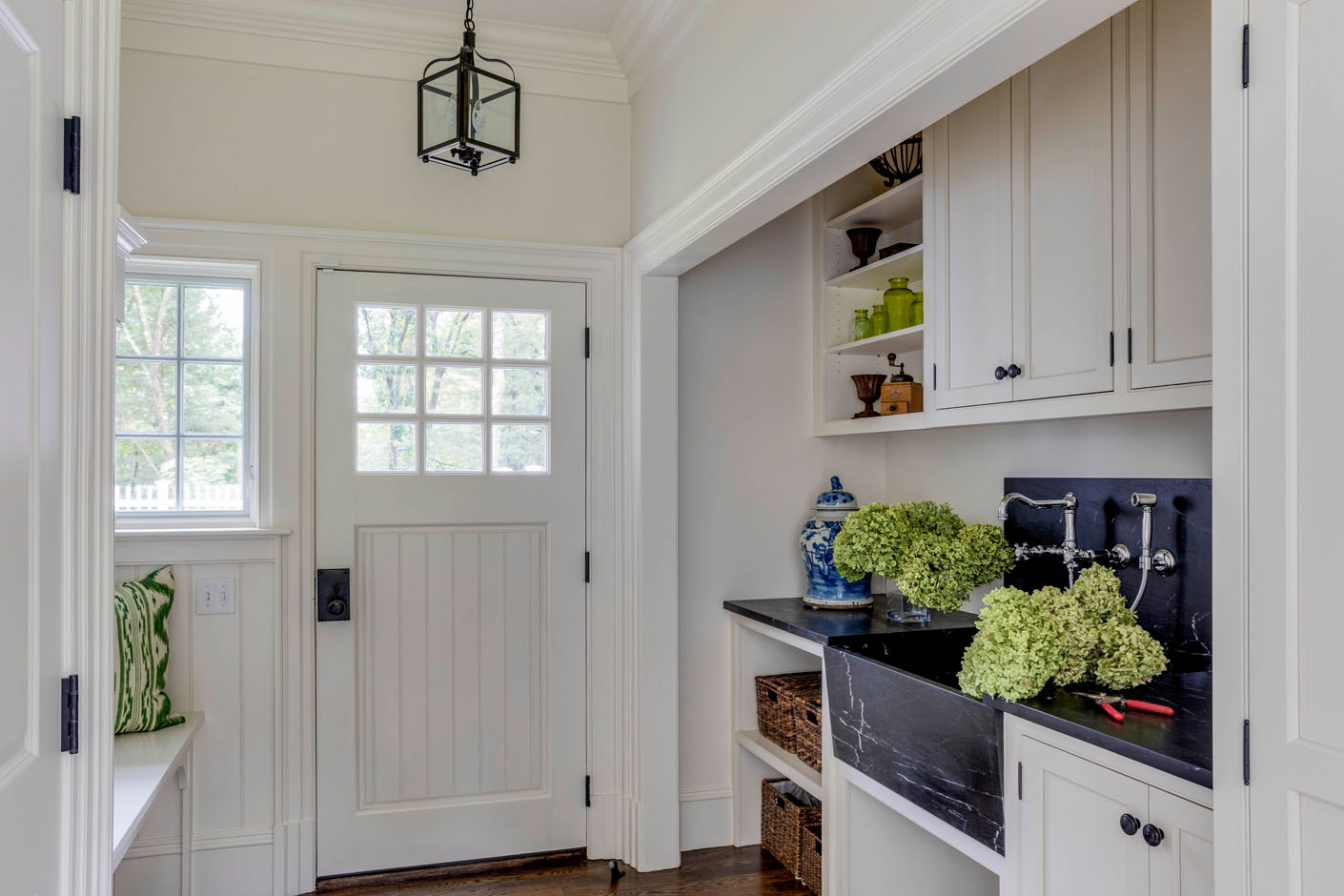
The family entrance is most often adjacent to the kitchen and garage. This is convenient for homeowners and staff alike because it makes re-stocking the kitchen easy for everyone, and also provides an easy way for catering staff to service a party without interrupting the flow at the more formal portion of a home.
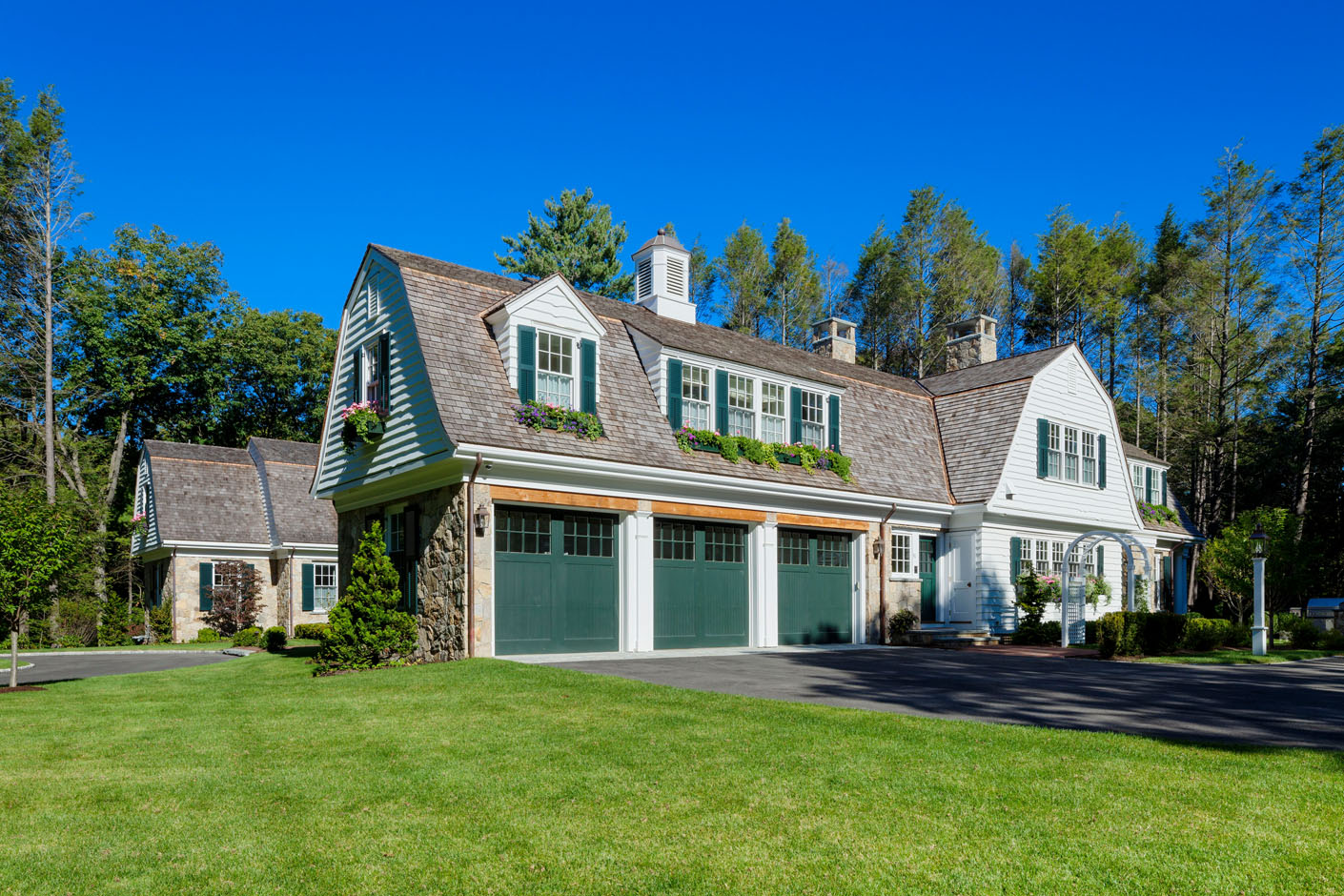
We also tend to place a second set of stairs that leads up to bedrooms and bonus rooms, or down to the basement where we locate mechanical systems. This allows easy access to mechanical systems without tracking through more formal spaces. In addition, we generally locate the main laundry room around this entry point as well so that all the most important housekeeping spaces are collocated.
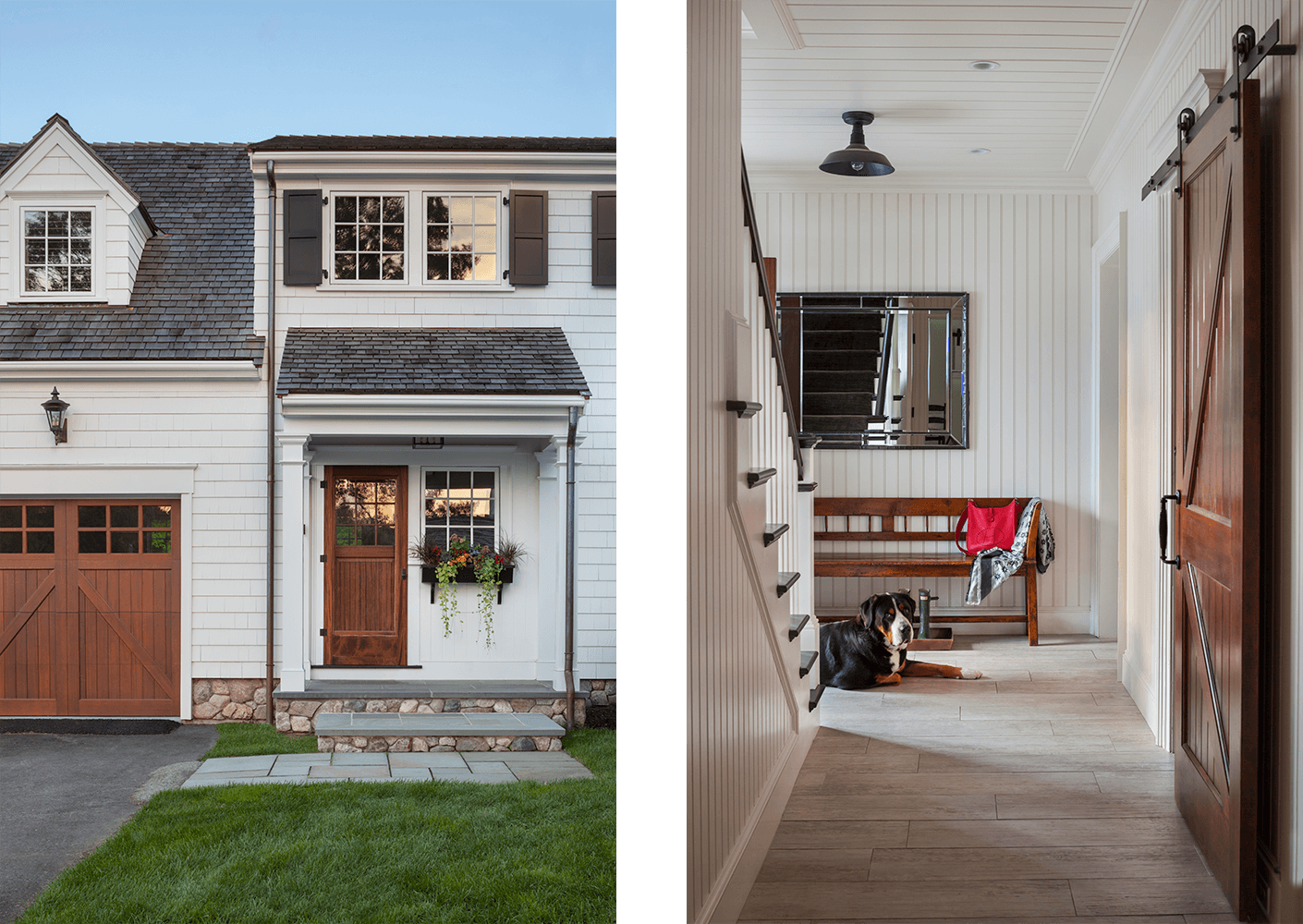
When choosing finishes for this portion of a home, we favor durable, easily cleaned surfaces – but also try to incorporate materials that exude warmth and exude the feelings of hearth and home. We often specify heated brick or stone floors, millwork with durable painted or stained finishes, and solid surface countertops – generally soapstone or quartz. Farm sinks with large bridge faucets and hand sprays are also a favorite. Windows are an essential component of a successful entrance. Natural light is key to creating a welcoming entry sequence. In addition to a glazed entry door, we also try to include at least one good sized window – even if that window is into an adjacent room that can offer some borrowed light. It is also important to make sure that climate and lighting control systems are easily accessible in this space.
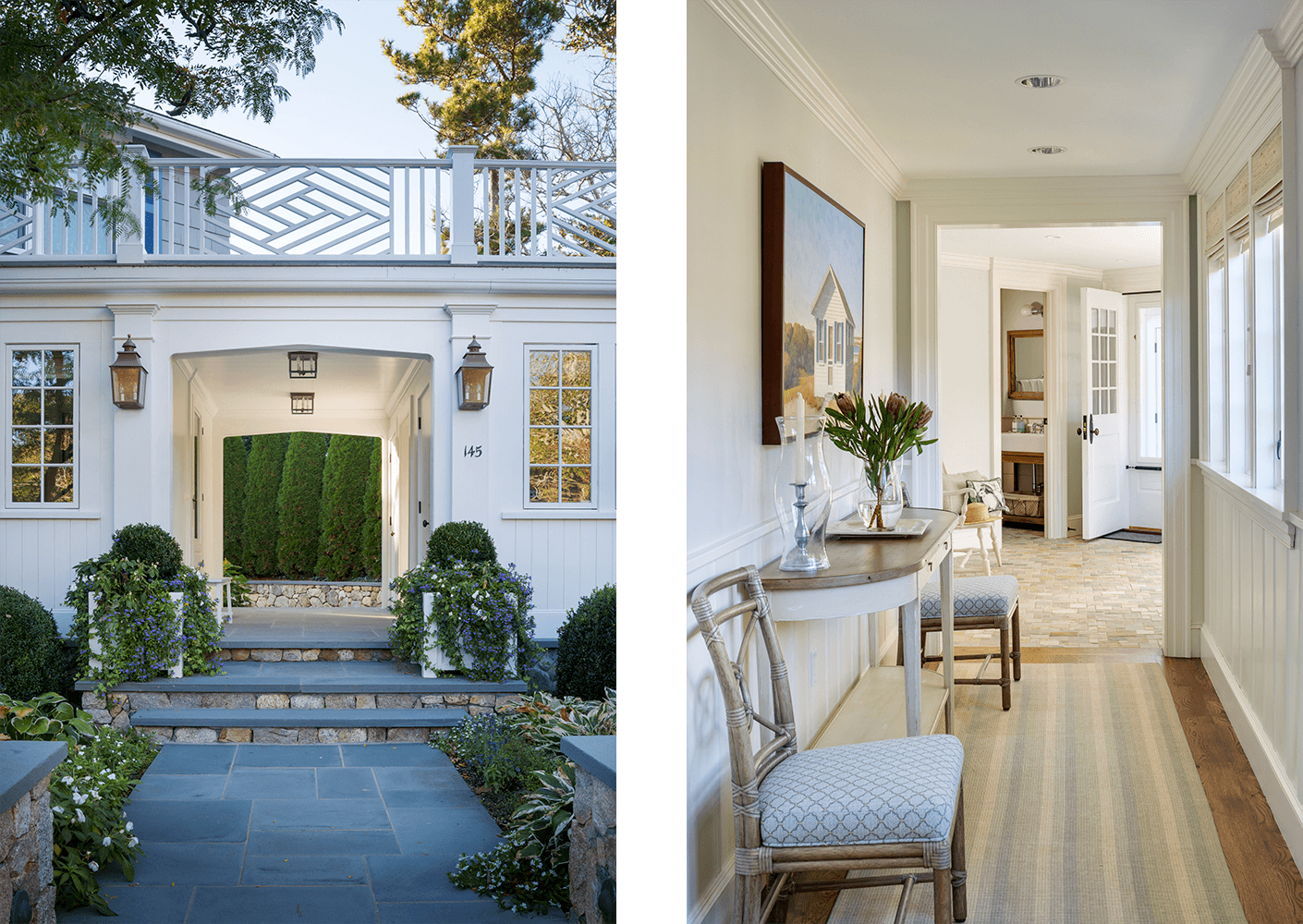
It’s hard to underestimate the importance of the family entrance since it is where the majority of one’s access to the home is through this space – and accordingly, we invest a good amount of time in the design of these essential spaces.
Next Blog Post
Mighty MudroomsMudrooms have become increasingly popular in recent decades, and while some still serve as small, “unofficial” entryways, others are now large, carefully choreographed storage rooms with added space for a washer and dryer and an adjacent powder room. But all efficient mudrooms have one thing in common: smart storage.